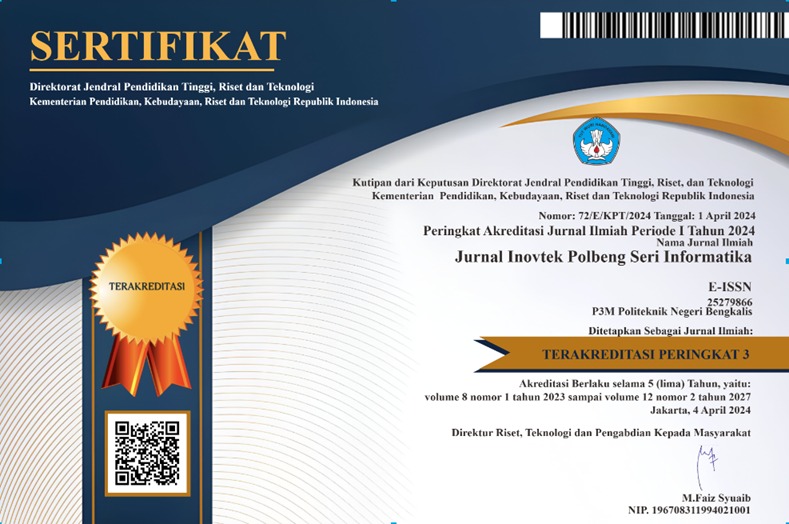Quality of Service Analysis on the Steam Link Platform as an Alternative to Online Gaming Technology
DOI:
https://doi.org/10.35314/rk0s3v40Keywords:
Steam Link, Cloud Gaming, Quality of Service, Throughput, DelayAbstract
Cloud gaming is a modern gaming option that has emerged as a result of technological advancements, offering users the convenience of playing games without requiring high-end hardware. This study aims to analyze the Quality of Service (QoS) of the Steam Link platform as an alternative to traditional cloud gaming technology. The evaluation focuses on two types of clients—Android devices and laptops—using quantitative methods, benchmarking, and TIPHON standardization. The tested parameters include throughput, delay, frame rate, and the usage of CPU, GPU, and RAM. Experiments were conducted for 15 minutes across three game genres (FPS, Racing, and Open World), using resolutions of 720p and 1080p, and bandwidth levels of 30, 40, and 50 Mbps. Each scenario was tested three times. The host device used a PC with an Intel Core i5-6400 processor and GTX 1070 GPU, while the clients included a Xiaomi 12 smartphone and an Acer TravelMate i3-1115G4 laptop. Test results showed throughput ranging from 14.542 to 33.920 Mbps, delay between 1.382 and 1.721 ms, and frame rates stable between 30 and 60 FPS. CPU and RAM usage remained under 30%, indicating efficient performance. However, issues such as host stuttering and performance differences between clients were observed. According to TIPHON standards, both throughput and delay were rated as very good. With a stable 50 Mbps network connection, Steam Link proves to be a practical and affordable alternative for cloud gaming.
Downloads
Downloads
Published
Issue
Section
License
Copyright (c) 2025 INOVTEK Polbeng - Seri Informatika

This work is licensed under a Creative Commons Attribution-NonCommercial-ShareAlike 4.0 International License.














